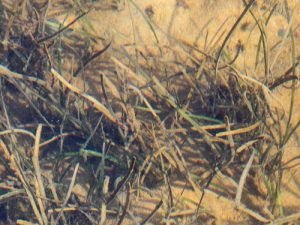 Updated research from the Chesapeake Bay Program reveals a 38% decline in underwater grasses from the previous year, when the Bay may have supported up to 108,078 acres.
Updated research from the Chesapeake Bay Program reveals a 38% decline in underwater grasses from the previous year, when the Bay may have supported up to 108,078 acres.
Submerged aquatic vegetation (SAV) is critical to the Chesapeake Bay, providing food and habitat to wildlife and improving water quality by absorbing excess nutrients and trapping sediment.
In 2019, an estimated 66,387 acres of underwater grasses were mapped in the Chesapeake Bay and its tidal tributaries. Although this is a 70% increase from the 38,958 acres observed during the first survey in 1984, it is a 17% decrease from the preceding 10-year average of 79,738 acres.
Experts attribute the losses largely to a decline in widgeon grass, a species whose abundance can rise and fall from year to year and responds easily to weather events or changes in water quality.
The decline in widgeon grass observed in 2019 mirrors a similar situation that occurred in 2001-2003, when a rapid increase in widgeon grass in 2001 and 2002 was followed by a 50% decline in 2003.
Though the precise cause for the fall in widgeon grass in 2019 is unknown, a contributing factor may have been higher than average river flows entering the Bay, which reduces water clarity and blocks sunlight from reaching the grasses.
In 2019, an estimated decline of 34,986 acres was observed in moderately salty waters, particularly in the Tangier Sound area, which experienced an 18,452-acre decline. Overall, the lower central Chesapeake Bay saw fewer grasses, both in the Maryland and Virginia portions.
However, certain areas did see a growth in grass abundance. The Sassafras River in northeast Maryland, the Severn River in central Maryland and the middle and upper portions of the Rappahannock River in Virginia noted modest increases.
To learn more about the Chesapeake Bay Program’s progress toward achieving and sustaining 185,000 acres of underwater grasses Bay-wide, visit chesapeakeprogress.com.
source: Chesapeake Bay Program
Leave a Reply
You must be logged in to post a comment.